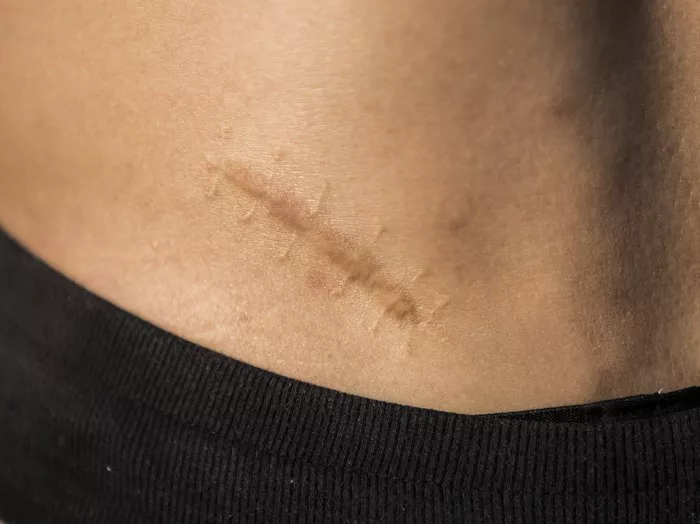Scars are more than just physical reminders of past injuries or surgeries; they can also affect our self-esteem and confidence. For many people, restoring the natural color of their skin after scars is a top priority. In this comprehensive guide, we’ll delve into the various methods and treatments available for restoring skin color after scars, providing insights, tips, and expert advice to help you achieve the flawless complexion you desire.
Understanding Scars: The Science Behind Skin Discoloration
Before diving into the methods for restoring skin color after scars, it’s essential to understand how scars form and why they often result in discoloration. When the skin is injured, whether due to trauma, surgery, or acne, the body’s natural healing process kicks in. During this process, the body produces collagen to repair the damaged tissue, leading to the formation of a scar.
However, the new collagen fibers that make up the scar tissue are often of a different texture and composition than the surrounding skin, leading to changes in color and texture. This discoloration occurs because the scar tissue lacks the melanin-producing cells (melanocytes) found in healthy skin, resulting in a lighter or darker appearance compared to the surrounding skin.
The Road to Recovery: Strategies for Restoring Skin Color
Restoring skin color after scars is a multi-step process that requires patience, consistency, and the right approach. While complete restoration may not always be possible, there are several methods and treatments available to help minimize discoloration and promote a more even skin tone. Let’s explore some of the most effective strategies for restoring skin color after scars:
1. Sun Protection: Shielding Your Skin from Harmful UV Rays
Exposure to sunlight can exacerbate skin discoloration and hinder the body’s natural healing process. Therefore, one of the most crucial steps in restoring skin color after scars is to protect your skin from the sun’s harmful UV rays. This can be achieved by:
1. Applying a broad-spectrum sunscreen with SPF 30 or higher to the scarred area daily, even on cloudy days.
2. Wearing protective clothing, such as hats, long-sleeved shirts, and sunglasses, to shield your skin from direct sunlight.
3. Seeking shade whenever possible, especially during peak sun hours (10 a.m. to 4 p.m.).
By taking proactive measures to protect your skin from the sun, you can prevent further discoloration and promote the healing of scarred tissue.
2. Topical Treatments: Nourishing Your Skin from the Outside In
Topical treatments, such as creams, gels, and serums, can help improve skin tone and texture over time. Look for products that contain ingredients known for their skin-brightening and pigment-correcting properties, such as:
Vitamin C: Known for its antioxidant properties, vitamin C can help reduce hyperpigmentation and promote collagen production, leading to a brighter complexion.
Hydroquinone: A skin-lightening agent commonly used to treat dark spots and hyperpigmentation, hydroquinone inhibits the production of melanin in the skin.
Retinoids: Derived from vitamin A, retinoids promote cell turnover and collagen production, helping to fade scars and improve skin texture.
Alpha hydroxy acids (AHAs) and beta hydroxy acids (BHAs): These exfoliating acids help remove dead skin cells, allowing new, healthy skin to emerge and reducing the appearance of scars.
When using topical treatments, it’s essential to follow the manufacturer’s instructions carefully and be patient, as results may take several weeks or months to become apparent.
3. Laser Therapy: Harnessing the Power of Light for Skin Rejuvenation
Laser therapy is a popular and effective treatment option for restoring skin color after scars. Laser treatments work by delivering concentrated beams of light to the targeted area, stimulating collagen production, and promoting cell turnover. This helps to improve skin texture, reduce hyperpigmentation, and fade scars over time.
There are several types of laser treatments available, including:
Fractional laser therapy: This type of laser treatment targets only a fraction of the skin’s surface, leaving surrounding tissue untouched. Fractional laser therapy is particularly effective for treating acne scars and other types of scarring.
Intense pulsed light (IPL) therapy: IPL therapy uses broad-spectrum light to target pigmented areas of the skin, such as scars and dark spots. It can help even out skin tone and reduce the appearance of discoloration.
Pulsed dye laser (PDL) therapy: PDL therapy targets blood vessels in the skin, making it effective for treating red or purple scars caused by trauma or surgery.
Before undergoing laser therapy, it’s essential to consult with a qualified dermatologist or skincare specialist to determine the most suitable treatment option for your specific needs and skin type.
4. Microneedling: Stimulating Collagen Production for Skin Regeneration
Microneedling, also known as collagen induction therapy, is a minimally invasive procedure that involves using a device equipped with fine needles to create tiny punctures in the skin’s surface. These micro-injuries stimulate the body’s natural healing response, triggering the production of collagen and elastin, which are essential for skin regeneration and repair.
In addition to promoting collagen production, microneedling can also help improve the absorption of topical treatments, allowing them to penetrate more deeply into the skin and enhance their effectiveness. This makes microneedling an excellent complementary treatment for restoring skin color after scars.
5. Chemical Peels: Exfoliating Away Imperfections
Chemical peels are another effective treatment option for restoring skin color after scars. During a chemical peel, a solution containing alpha hydroxy acids (AHAs), beta hydroxy acids (BHAs), or other exfoliating agents is applied to the skin, causing the outermost layer of damaged skin to peel away. This reveals fresh, healthy skin underneath, reducing the appearance of scars and promoting a more even skin tone.
Chemical peels come in varying strengths and formulations, ranging from mild to deep, depending on the severity of the scarring and the desired results. It’s essential to consult with a qualified skincare professional to determine the most appropriate type of chemical peel for your skin type and concerns.
6. Camouflage Makeup: Concealing Scars for a Flawless Finish
While not a permanent solution, camouflage makeup can provide temporary relief for individuals looking to conceal scars and even out skin tone. Specialized camouflage makeup products, such as color-correcting concealers and setting powders, are designed to disguise imperfections and create a smooth, seamless finish.
When choosing camouflage makeup, opt for products that are non-comedogenic and fragrance-free to avoid exacerbating existing skin issues. Additionally, be sure to cleanse your skin thoroughly at the end of the day to remove makeup and prevent clogged pores.
7. Professional Guidance: Seeking Expert Advice and Support
When it comes to restoring skin color after scars, it’s essential to seek guidance from qualified skincare professionals, such as dermatologists, plastic surgeons, or licensed estheticians. These experts can assess your skin condition, recommend appropriate treatments, and provide personalized care tailored to your individual needs and concerns.
Before undergoing any treatment, be sure to schedule a consultation with a skincare professional to discuss your goals, expectations, and any potential risks or side effects. By working closely with a trusted expert, you can embark on your journey to restoring skin color after scars with confidence and peace of mind.
Conclusion: Embracing the Journey to Radiant Skin
Restoring skin color after scars is a journey that requires patience, perseverance, and the right combination of treatments and techniques. Whether you choose to protect your skin from the sun, explore topical treatments, or undergo more intensive procedures such as laser therapy or microneedling, the key is to approach the process with an open mind and a commitment to self-care.
Remember, no two scars are alike, and what works for one person may not work for another. It’s essential to listen to your body, pay attention to how your skin responds to different treatments, and adjust your skincare routine accordingly. With dedication, determination, and the guidance of qualified skincare professionals, you can restore your skin’s natural color and texture, reclaiming your confidence and embracing the beauty of your unique journey.
[inline_related_posts title=”You Might Be Interested In” title_align=”left” style=”list” number=”6″ align=”none” ids=”7277,7274,7217″ by=”categories” orderby=”rand” order=”DESC” hide_thumb=”no” thumb_right=”no” views=”no” date=”yes” grid_columns=”2″ post_type=”” tax=””]































